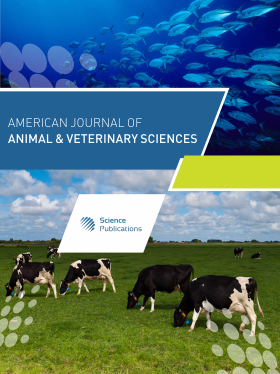Patterns of Growth and Development of Young Herd Horses of Eurasia
- 1 «Taraz Regional University named after M.Kh.Dulati», Kazakhstan
- 2 «Russian State Agrarian University - Moscow Agricultural Academy named after K.A. Timiryazev», Russia
- 3 «Tuva State University», Russia
- 4 «Kazakh National Agrarian Research University», Kazakhstan
- 5 «Research and Production Center for Livestock and Veterinary Medicine», Kazakhstan
Abstract
The aim of the research in a comparative aspect is to study the patterns of postembryonic growth and development of the herd horse population of the Republic of Kazakhstan and the Republic of Teva of the Russian Federation. In the Republic of Kazakhstan, the experimental part of the work was carried out in the farms "Urker" of Moyinkum and "Kaldybay" of Zhualy districts of Zhambyl region, respectively engaged in breeding Kazakh horses of the zhabe type of the southern population and the Kazakh breed of the southern population. In the Republic of Tuva, Tuvan horses from the State Unitary Enterprise "Choduraa" of the Tes-Khem district (southern steppe zone), ACF "Seserlig" of the Piy-Khem district (central mountain zone) of the Republic of Tyvaserved as the material for research. It was established that the young horses of the Kazakh breed in all periods of the experiment had superiority over the Kazakh horse of the zhabe type in almost all the studied measurements. Thus, at the age of 2.5 years, Kazakh horses surpassed the peers of the Kazakh horse of the zhabe type by 8.2 cm in height at the withers; the oblique length of the trunk by 7.10 cm; the chest girth behind the shoulders - 10.60 cm and the pastern girth - 0.70 cm, which characterizes the energy potential of growth and the possession of a massive physique. The colts of the Tuvan horse from the southern steppe zone are inferior to their peers from the central mountain zone in height at the withers, oblique length of the trunk, chest girth, but exceed the pastern girth by 0.2 cm. The same pattern is observed at 18 and 30 months of age. It was found that the live weight of colts of experimental groups increases unevenly from the age of three days to the age of 1 month. So foals received from the Kazakh breed at the age of 3 days weighed an average of 39.8, 1 month – 80.1 kg and foals from mares of the zhabe type in the same periods weighed 39.3 and 78.5 kg, young Kazakh horses at the age of 3 months on average had a live weight of 130.2 kg, 6 months - 179.6 kg, 12 months - 255.8 kg, 18 months - 307.3 kg and 30 months - 410.7 kg, which is more than their peers received from mares of the zhabe type at the studied ages respectively by 4.30; 8,9; 35.40; 26.80 and 58.20 kg (P<0.05).
DOI: https://doi.org/10.3844/ajavsp.2022.61.65

- 4,598 Views
- 3,306 Downloads
- 3 Citations
Download
Keywords
- Kazakh Breed
- Kazakh Horse of the Zhabe Type
- Tuvan Breed
- Earliness
- Body Measurements
- Live Weight
